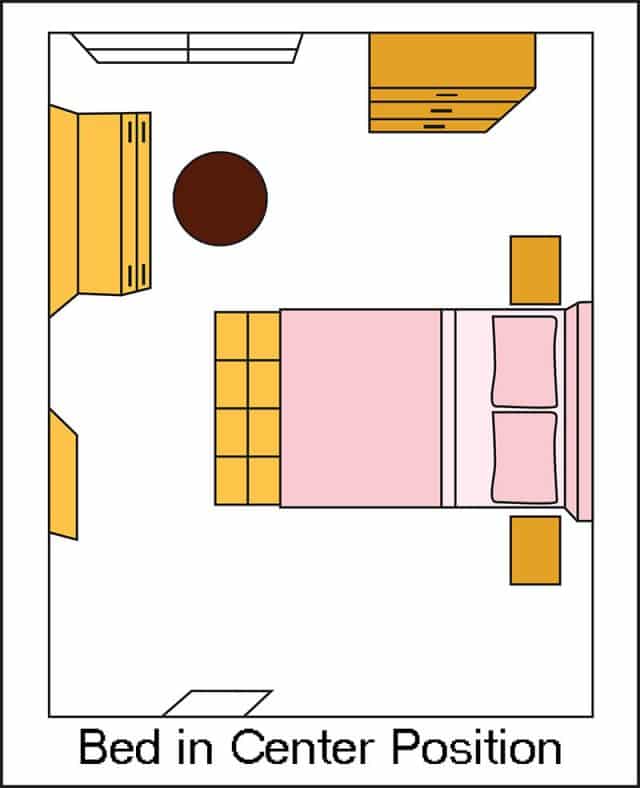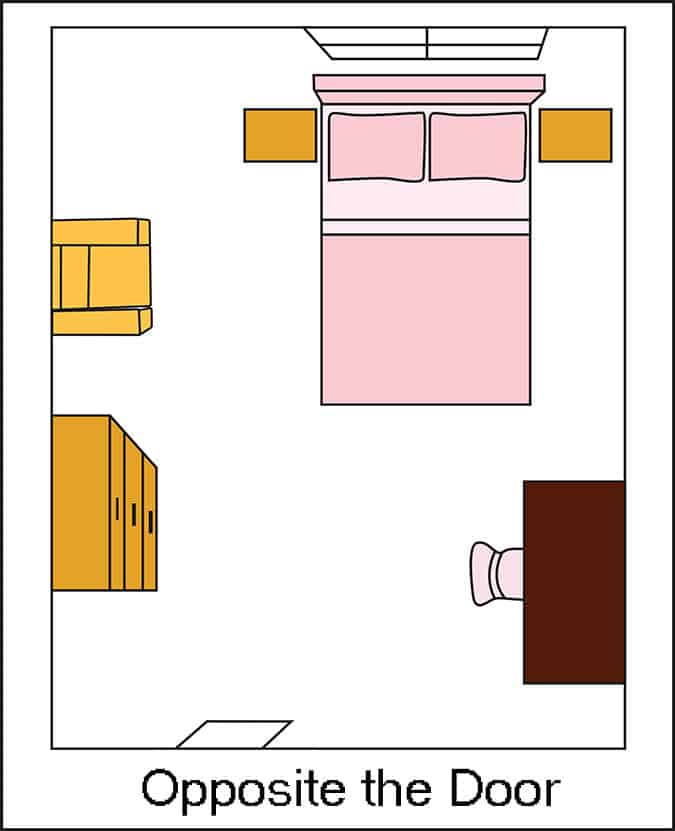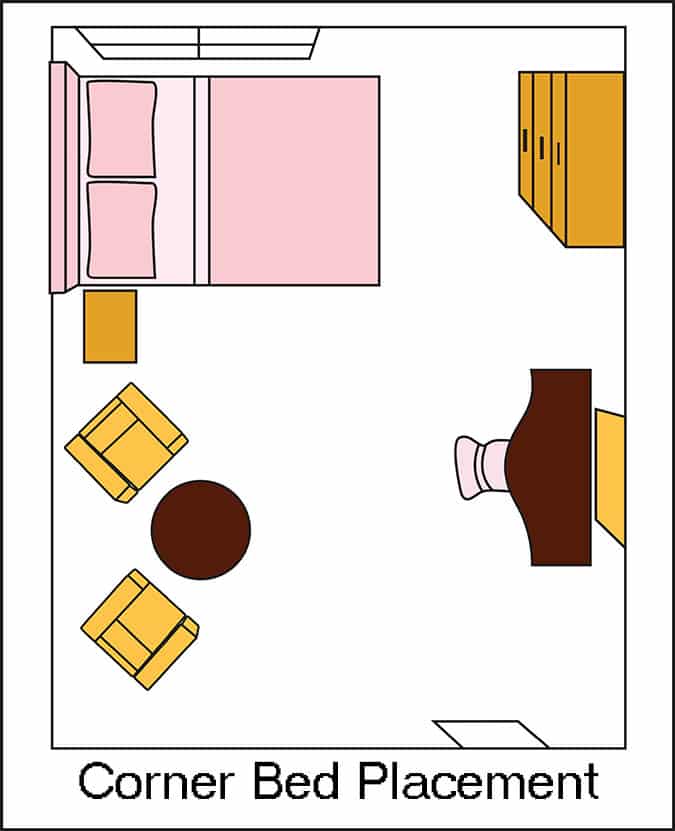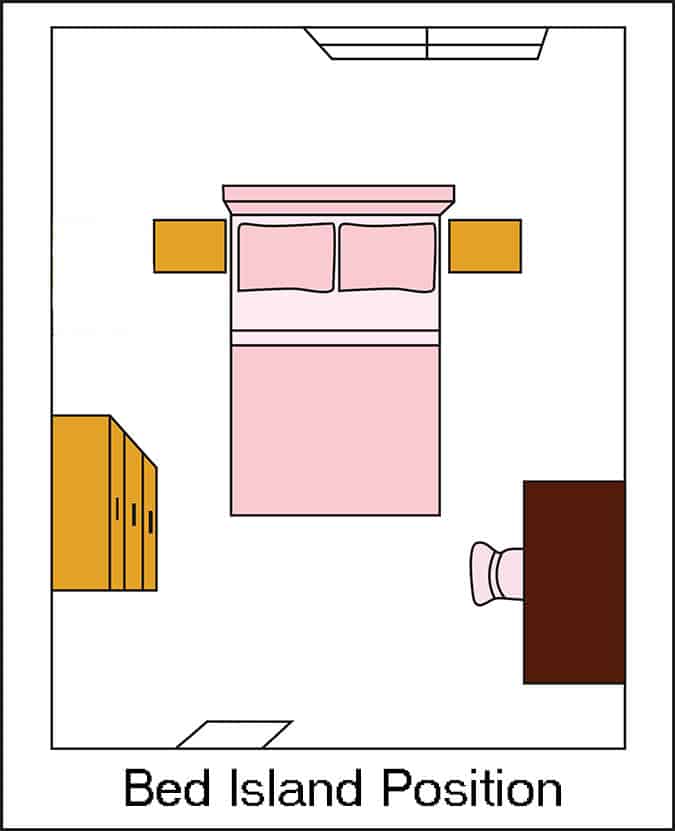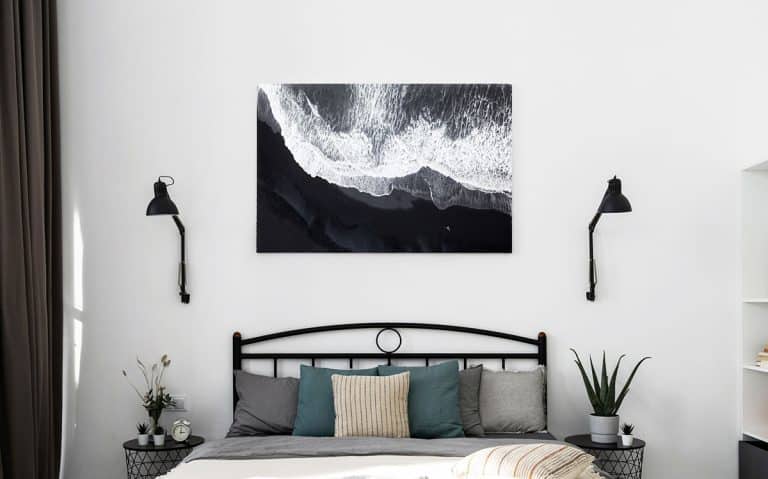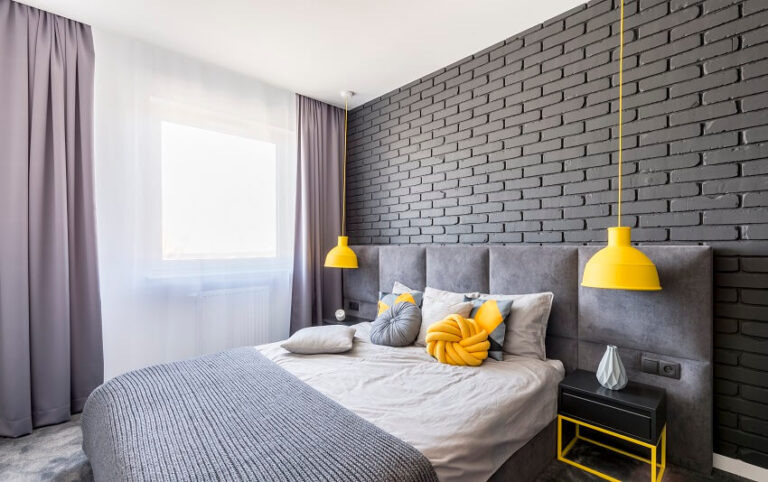What Are The Best Bed Placement & Layout Ideas

Where should you position your bed in the bedroom? Deciding on your bedroom layout can prove tricky. We often want to create the right kind of ‘feeling’ within this space, and the layout will make a huge difference to this. To maximize your bedroom space, and create a desirable setting, you’ll need to consider where your bed –the largest piece of furniture in your bedroom, will be positioned. There are a variety of factors which should influence your decision: the shape of the room, the space you have available, and your design preference.
The Shape of the Room
Before you even consider where your bed can go, you’ll need to bear in mind that the answer is largely determined by the shape of your room. It’s worth drawing out a rough sketch of the room shape, or if you can – a scale drawing, and slotting in any existing furniture that you feel is essential to include within this space. You’ll need to factor in space for walkways to ensure your movement is not restricted in any way, and consider how you want your bed to be featured within the room.
The bed is the key component in any bedroom, and from a design point of view deserves the right attention. However, this may not always be practical due to the room proportions. If, for example your bedroom is rectangular in shape, then zoning off the room into different areas is one way to make the layout work.
You can use a bedroom layout planner to help visualize your design before purchasing any furniture or before moving anything around.
While your bed might not be the center of attention for the whole room, it can still be a feature within the designated zone. You might have an angular shaped room which will limit your ability to choose where to place the bed. In this instance, you’ll likely have one or two feasible solutions.
The Floor Space You Have Available
It’s pretty obvious that if your bedroom is filled with furniture and other items, then you’ll be limited in where you can actually place the bed. You might find that due to the floor space restrictions, the only furniture you end up with is your bed, and – if lucky a couple of side tables.
If you’re not as concerned about the bed being the focal point – or indeed simply lack the storage space to move any non-essential bedroom items elsewhere, then don’t feel disheartened. As mentioned earlier, you could still make your bed a ‘feature’ in the room by zoning off areas. Your bed size will often determine many of your layout choices.
Bedroom Design Preference
Typically, there are four main bed positioning layouts that, from an interior design point of view, you should use.
Bed in Center Position
In an ideal world, the best place for your bed is at the center of the room’s longest wall. This position ensures the bed is the focal point of the room. You’re left with space either side for bedside tables, which creates a sense of symmetry, resulting in a calm and relaxing environment.
Opposite the Door
Placing the bed diagonally from the doorway will ensure there’s a clear view of the door and, unlike positioning the bed directly opposite it, minimize any feelings of vulnerability.
Corner Bed Placement
If you have little wall space, there are a couple of different options to angle your bed from the corner. You could position the bed so none of the sides touch the wall, and it directly faces the opposite corner. Alternatively, the bed could be positioned to touch the wall from two sides – perfect if you are really struggling for space. See more bedroom corner ideas here.
Bed Island
Bed placement in the center of the room is a unique way to lay out your room. You won’t need to worry about any walls being in the way whilst getting into bed and this position ensures a free flow of movement around the room. A headboard, rug and accessories can help to tie the bed into the rest of the scheme, so it doesn’t appear disjointed from the rest of the space.
Feng Shui Bed Placement
There’s also Feng shui to add to the mix. This well-known design concept looks at the flow of energies within a space, and offers its own guidance. These ancient Chinese rules advise you to consider where your bed is positioned in relation to the other rooms; important in maintaining the flow of positive chi into the bedroom. You can read more on how to generate positive chi in your bedroom below.
Some rules of thumb with bed placement for Feng Shui is that you want your bed to be in a commanding position. This means that when you are in bed you can see the doorway, but you are not directly laying in line with the door. Positioning the bed diagonal from the door works good for this type of layout. Another thing to consider is that its much better to have a solid wall directly behind the headboard rather than a window if possible. If unavoidable you can get tips about the placement of a bed in front of a window here.
Keeping space of 18″ on both sides of the bed provides needed yin and yang balance especially if you are sharing the bed with a partner. Additionally, keeping the area directly above the bed free of architectural features such as wood beams, sloped ceilings and soffits is recommended. When unavoidable one can paint the feature to make the element less imposing or drape fabric to conceal it.
Ultimately, to answer the question of where to place your bed in your bedroom, you need to think about what is important to you in your bedroom space. Having a room that’s clearly thought out with the bed as the central focus? Or making the most of the space you have, with the bed positioned in a ‘zone’ alongside the other essential furniture? Is Feng shui important to you?
Regardless of your preference, with a little prior planning and design flair, wherever your bed is positioned it can be made to look great. Your aim is to create a calm, accessible boudoir that works with your room shape, size and personal taste.
For more related designs take a look at our gallery of the most popular types of bedroom styles.


